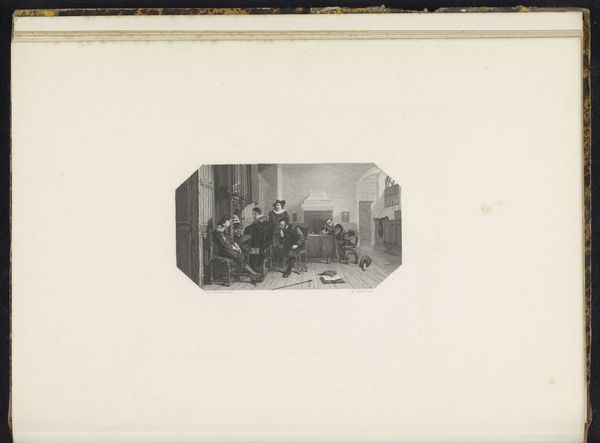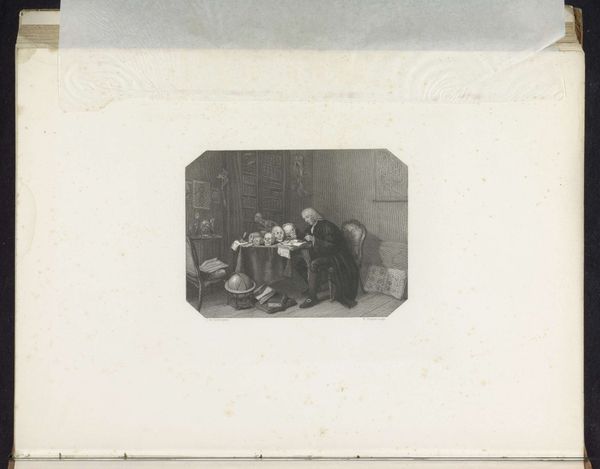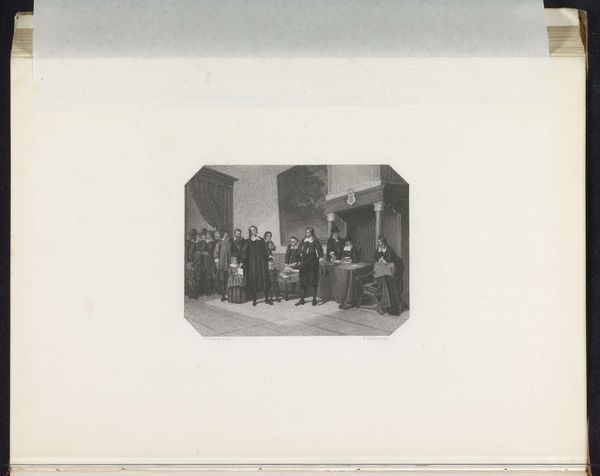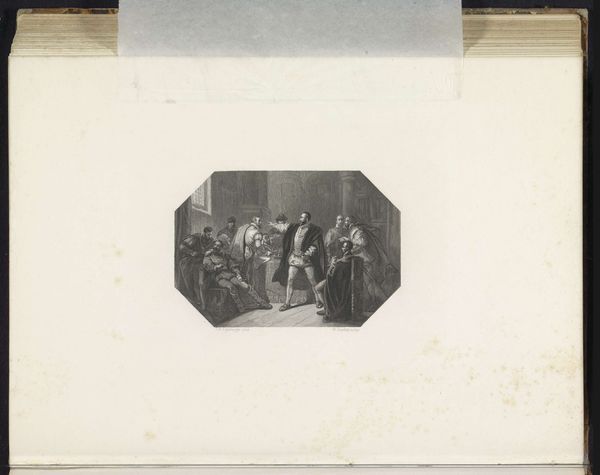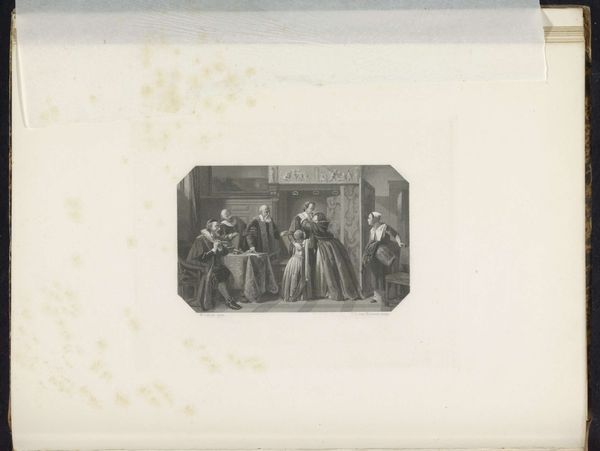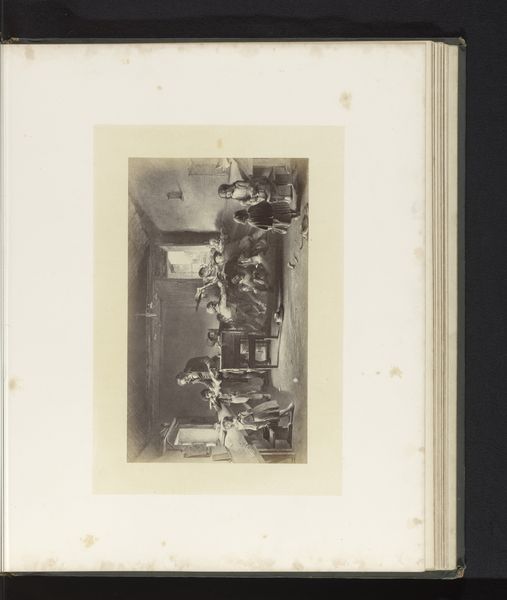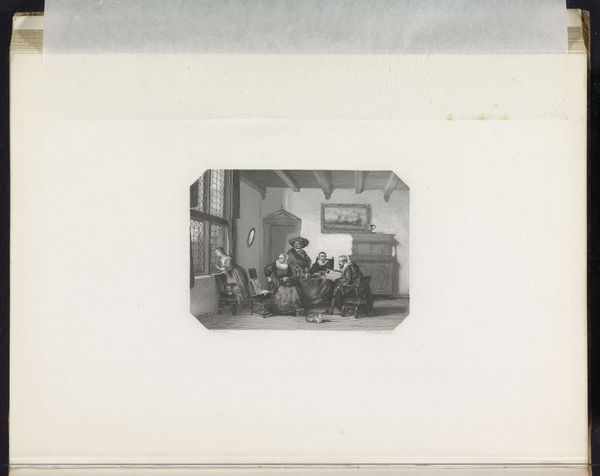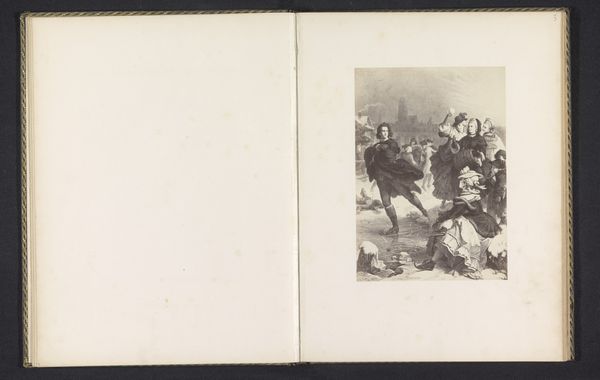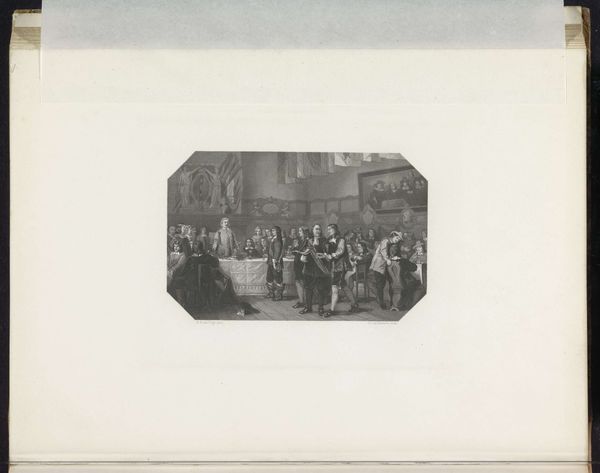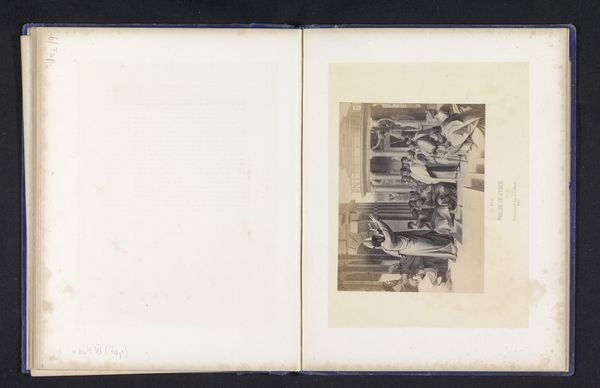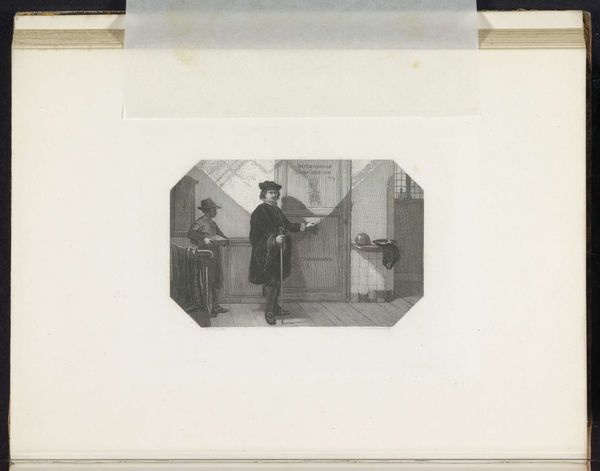
print, etching, paper, engraving
#
water colours
#
dutch-golden-age
# print
#
etching
#
paper
#
genre-painting
#
history-painting
#
engraving
#
realism
Dimensions: height 190 mm, width 240 mm
Copyright: Rijks Museum: Open Domain
Curator: Here we have an etching titled “De Muiderkring, 1619” by Christiaan Lodewijk van Kesteren, created sometime between 1865 and 1870. Editor: It's quite an intriguing image. The grey scale gives it a somber, serious air, but the interior scene, the grouping of figures... it feels surprisingly intimate, even performative. Curator: It does capture a very specific moment, and as a print depicting a scene from 1619 but created in the latter half of the 19th century, it prompts an exploration into the construction of historical memory and national identity. It depicts a gathering of the Muiderkring, a circle of intellectuals and artists who met at Muiden Castle. Editor: Precisely! What strikes me immediately is who *isn't* represented. We have men, presumably the core of this intellectual circle, but where are the women's voices? Are they merely decorative or serving a very specific purpose in this patriarichal cultural gathering? This piece silently reinforces the social hierarchies of the time. Curator: It's also interesting to consider the Realism style used in its depiction during a time of rapid social and political change in the Netherlands. The choice of etching and engraving lends it a sense of historical gravitas, visually linking it to the Dutch Golden Age, a deliberate association with a period of national prosperity. It becomes a visual tool in the creation of a heroic national narrative. Editor: And I can't help but analyze the composition; it feels deliberate that figures near the front seem highlighted by the light pouring through a window while one figure lurks on the shadows of the left frame. Their arrangement begs the question of who is being invited into the narrative and who might be excluded? The print could almost function as a kind of commentary on power dynamics and performative cultural expression of its own time, in the late 19th century. Curator: Certainly, understanding the social and cultural contexts both of the scene depicted and the moment of the work's creation illuminates its multiple layers of meaning. It prompts critical dialogues about representation, power, and the making of historical narratives through art. Editor: It truly pushes us to think about how images shape our understanding of the past, whose stories are amplified, and the importance of critical awareness when encountering art that purports to represent "history".
Comments
No comments
Be the first to comment and join the conversation on the ultimate creative platform.
